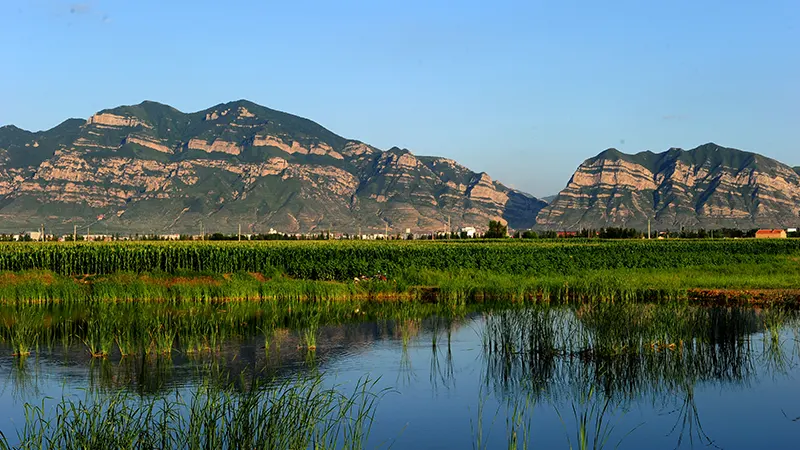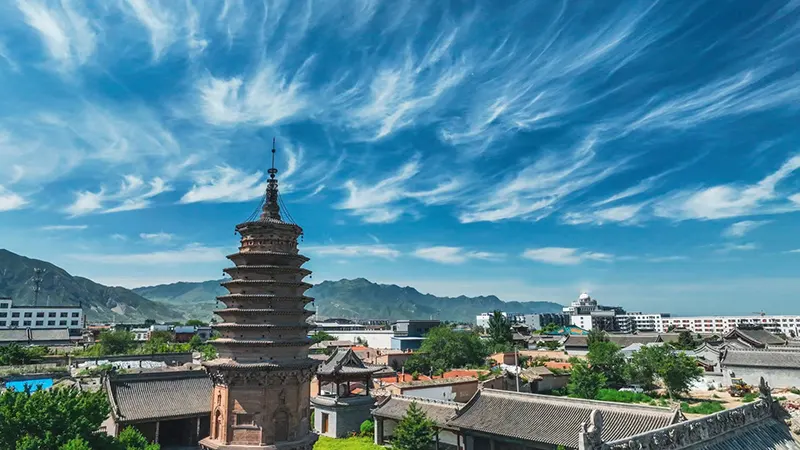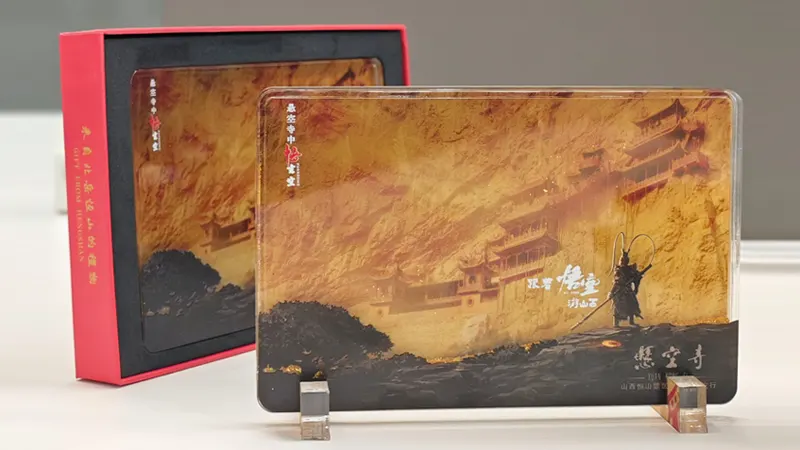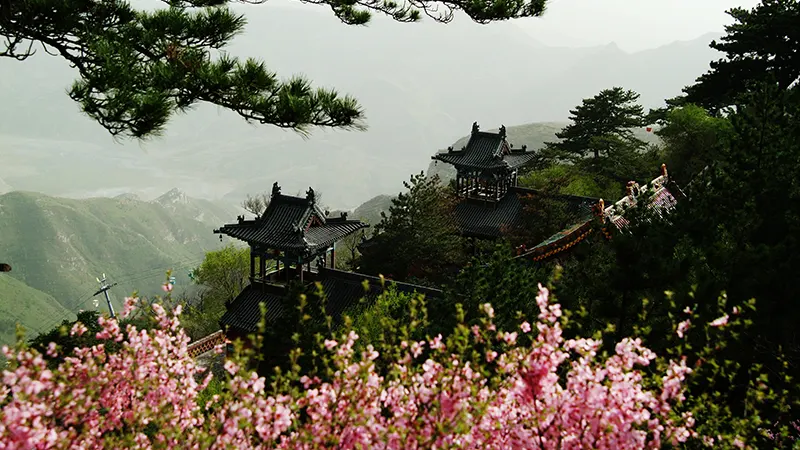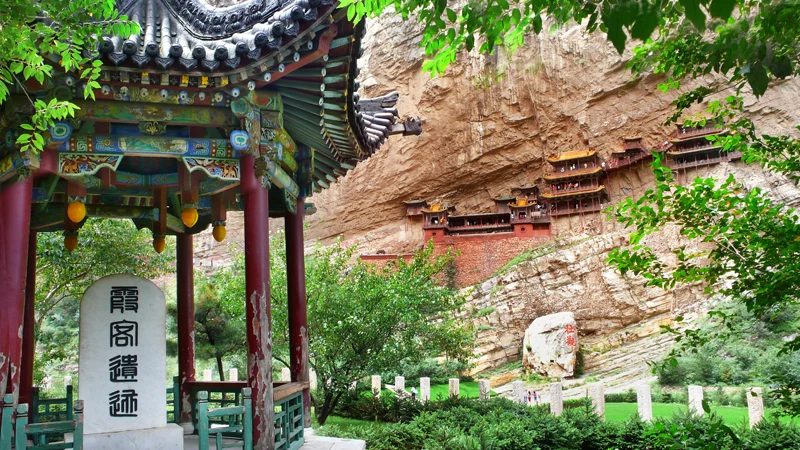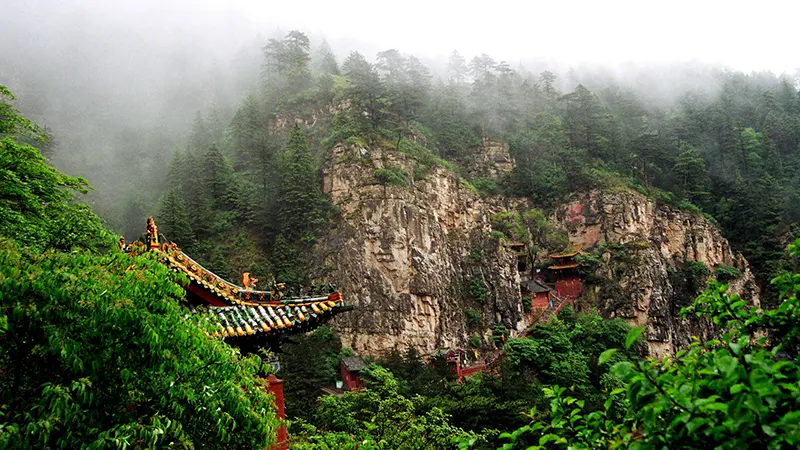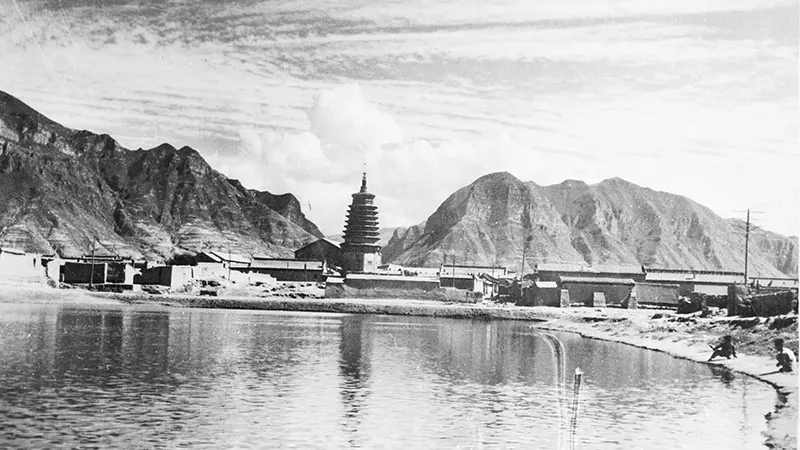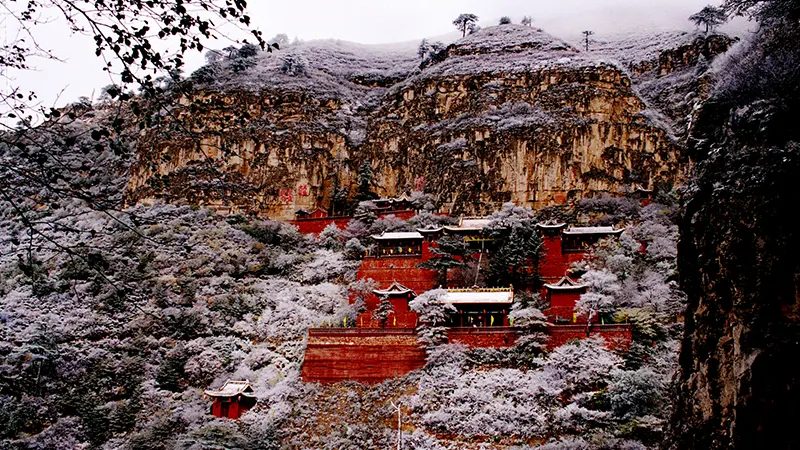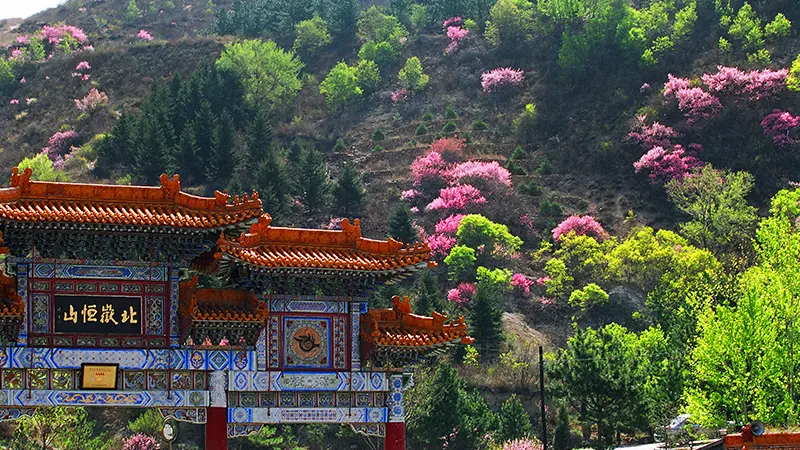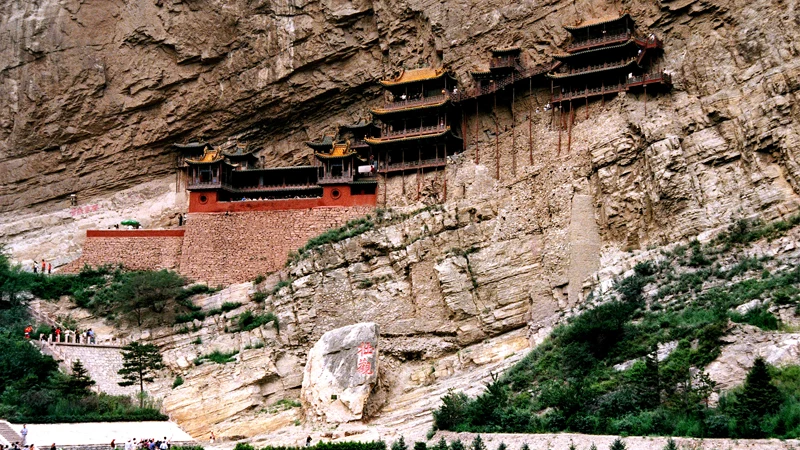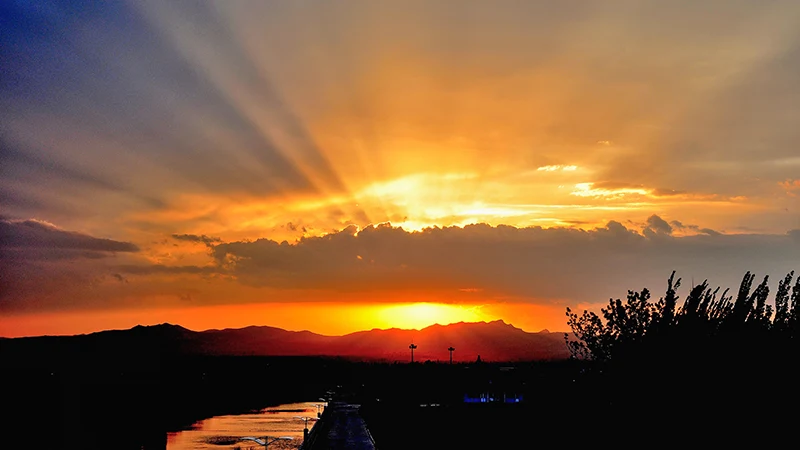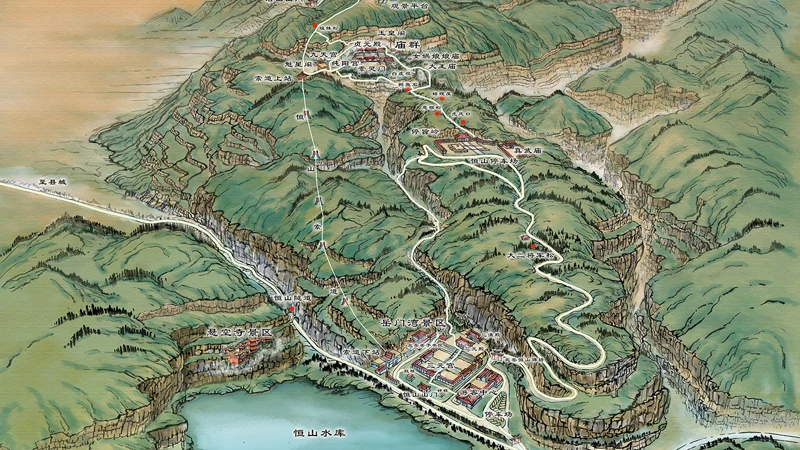Why do tourists flock to Hunyuan, outside the Great Wall, to worship the Water God?
Publish Time:
2025-03-14 16:30
Source:
Since ancient times, two water gods have been stationed in Hunyuan County. One is Xuanwu the Great, and the other is the god of Lǜlǚ.
As a historically and culturally renowned city in Shanxi Province, Hunxian County is truly a magical and beautiful ancient city harboring numerous secrets. If you happen to wander into this land, it's like falling into an unfathomable deep sea of Eastern civilization, and you will surely be captivated and awestruck by its endless mysteries. Among them, the ancient, magical, and unique water deity civilization is truly something that makes tourists yearn for and marvel at.
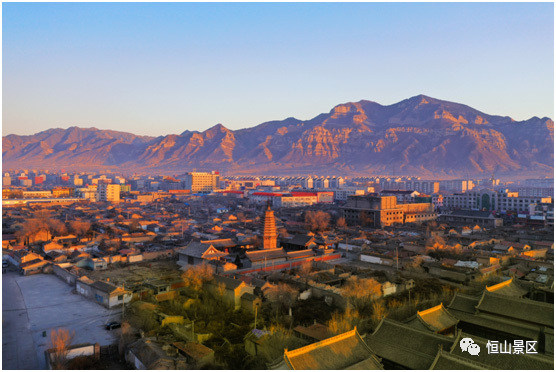
Since ancient times, Hunxian County has been guarded by two water deities, one of whom is Xuanwu the Great. Xuanwu is one of the four celestial spirits in ancient Chinese mythology, also known as tortoise and snake, a national totem formed by a combination of a tortoise and a snake. The annotation of "Chu Ci•Yuan You" states: "Xuanwu, the name of the northern god", and "summon Xuanwu for a distant journey". Hong Xingzu's supplementary annotation says: "Some say: 'Xuanwu is a tortoise and snake, located in the north, hence the name Xuan (black), and has scales and armor, hence the name Wu (martial)'. Cai Yong said: 'The northern Xuanwu is the leader of the shelled insects.'
Around the late Spring and Autumn period to the early Warring States period, the dragon, phoenix, tiger, and tortoise were regarded as the "four divine beasts", becoming the celestial totem that governed and protected the four directions, and were worshipped by the ancestors. It is said that the dragon and phoenix totems among the "four divine beasts" symbolize the great integration of the Chinese nation, while the tortoise and tiger may have been creatively conceived as unique totems based on thrilling wars. The "Yi Jing" records that during Yu the Great's water control, a divine tortoise emerged from the Luo River, with cracks on its back resembling characters. Yu took this as a model and created the "Shang Shu•Hong Fan" "Nine Categories". In ancient times, the appearance of the extraordinary phenomena of "He Tu Luo Shu", with a dragon carrying a map and a tortoise emerging with a book, was considered an auspicious omen for the emperor's mandate.
It is said that Xuanwu originated from ancient star worship, referring to the seven mansions of the Northern Xuanwu among the four celestial images, which are divided into east, south, west, and north according to the twenty-eight mansions. The four celestial images in traditional Chinese culture refer to the Azure Dragon, White Tiger, Vermilion Bird, and Xuanwu, representing the four directions of east, west, south, and north respectively. In the third year of Tianxi of the Northern Song Dynasty (1019 AD), "Yun Ji Qi Qian" records: "The four celestial images are the Azure Dragon, White Tiger, Vermilion Bird, and Xuanwu. The Azure Dragon is the east Jia and Yi...The White Tiger is the west Geng and Xin metal...The Vermilion Bird is the south Bing and Ding fire...Xuanwu is the north Ren and Gui water. It can be both soft and strong. The classics say: 'The best is like water, neither lead nor tin, nor any kind of stone, water is the divine water of the river vehicle, born before heaven and earth, the ultimate medicine cannot be temporarily abandoned. It can nurture all things, hence the name Xuanwu. As aspiring scholars refine the alchemy furnace, those who know these four celestial images, all the heavenly beings in the ten directions will look up to and respect them. The ancient scriptures say 'the elixir of the four divine beings', this is it."
Before the Han Dynasty, Xuanwu was only in the image of a divine tortoise. After the Han Dynasty, Xuanwu in the tile ends, murals, brick carvings, and tomb stone carvings added the image of a snake on the basis of the divine tortoise, with the tortoise and snake intertwined and fighting each other, highlighting Xuanwu's bravery in eating snakes and eliminating evil, and showcasing the magical longevity of the tortoise and snake in Chinese culture. Scholar Kang Xiaoyun argued in his "A Study of Chinese Mythology" that Xuanwu is the incarnation of Xuan Snake and Gui Wu, Xuan Snake is a dragon-headed, phoenix-winged, python-bodied creature; Gui Wu is a dragon-headed, Ao-backed, Qilin-tailed creature, they are the evolution of the ancient divine beasts Teng Snake and Bi Xi, and also the fusion of the northern ethnic dragon totem and tortoise totem, the dragon and snake were originally one, Ao is the evolution of the tortoise, that is, the predecessor or another name for the dragon's son Bi Xi. Tortoises and snakes were considered spiritual beasts in ancient China, symbolizing longevity. Before the Han Dynasty, nobles often wore jade tortoise pendants, and in Japan, influenced by ancient Chinese civilization, the use of the character for tortoise and tortoise patterns was common in naming and creating emblems.
During the Northern Song Dynasty, Xuanwu was renamed Zhenwu to avoid the taboo of the Song Dynasty's Zhao family ancestor. Gu Jiegang, when studying Zhuanxu, discussed the relationship between Zhuanxu and Zhenwu: "Zhuanxu is the supreme god of the north, like the Xuan Tian Shang Di worshipped by the people today, so Bei Wei was built for him, and Xuan Palace was his residence." That is to say, Zhuanxu is Xuanwu, Xuanwu the Great, Zhenwu the Great, the supreme deity who dominates the north and guards Hengshan Mountain. During the Song and Yuan dynasties, Zhenwu was elevated from the Northern Palace Xuanwu to Zhenwu Zhenjun, An Tian Yuan Sheng Di, and then to the throne of Xuan Tian Shang Di. During the Ming Dynasty, Ming Chengzu, who succeeded to the throne from the north, regarded the Xuanwu guarding the north as his protective god, the master of the world's rivers and Huaihai, and the one who bears the burden of the four feet. After that, Xuanwu, as the god of Hengshan Mountain, gained increasing popularity among the people.
"Xuan Tian Shang Di Qisheng Lu" records the path of cultivation of Xuan Tian Shang Di (i.e., the Great Xuanwu of Mount Heng). Xuan Tian Shang Di was inherently kind and loved cultivation. Due to his particularly devout and dedicated cultivation, he moved Yu Qing Sheng Zu Zi Yuan Jun to appear and impart to him the supreme way of Wuji. After five hundred years of diligent cultivation, Xuan Tian Shang Di ascended to heaven, absorbed the true essence of Kan and Li, returned to his roots and position, ranked among the three assistant ministers in the heavenly realm, and among the ten great saints in the mortal world, his name was revealed for countless eons, and he lived as long as heaven, earth, sun, and moon, with his merits fulfilled.
Xuanwu holds such a high position in Chinese civilization, so why is he worshipped as a water god? Firstly, because he is the Great Emperor of Mount Heng. "Chongxiu Weishu Jicheng" volume six "He Tu" records: "The black emperor of the north, the god's name is Ye Guangji, the essence is Xuanwu", "the seven gods of the north, actually begin with Dou, guarding the north, and controlling wind and rain". "Hou Han Shu Wang Liang Zhuan" records: "Xuanwu, the name of the water god". The northern Xuanwu is Kan in the Bagua and represents water in the Five Elements. Rainwater is necessary for the growth of all things, and water can extinguish fire, so Xuanwu's water god attribute is unquestionable, and it is well-deserved to receive attention and belief from the people. There is also such a statement about the worship of Xuanwu the Great as a water god in Guangdong materials. According to Qu Dajun's research, Guangdong people worship both the Red Emperor and the Black Emperor, the Black Emperor is Xuanwu the Great, who resides in the North Pole and governs the Southern Ocean. The water of the Southern Ocean originates from the North Pole, the North Pole being the source, and the Southern Ocean being the tail. The worship of the Red Emperor is to control the tail of the water, and the worship of the Black Emperor is to govern the source of the water. Secondly, because the Great Emperor of Mount Heng is Zhuanxu, and Zhuanxu is the god of water control. Zhuanxu's water control predates Yu the Great. "Shi Ji•Lv Shu" records: "Zhuanxu had Gonggong's Chen, to pacify water disasters." Gonggong was originally an official in charge of water control, but he did not control water, instead creating water disasters. "Shi Ji Hui Zhu Kao Zheng" points out: "Gonggong's rebellion, shaking the waves and floods, causing disasters to the world, hence the term water disaster." Gonggong created water disasters in order to compete with Zhuanxu for the emperorship. According to "Shan Hai Jing•Hai Nei Jing": Gonggong's grandson Huanming also created water disasters. "Huainan Zi•Lan Ming Xun" records: "When the Jiao insects die, Zhuanmin is born." Chinese civilization cannot be separated from water control, including Zhuanxu's Five Emperors, who have been fighting against water disasters. "Shang Shu•Yao Dian" records that Emperor Shun once "exiled Gonggong to Youzhou." Until Yu the Great finally "removed the harm to the people and expelled Gonggong", "finally spread the soil to establish the nine states", completely achieving success in water control, laying the foundation for the development of Chinese civilization.
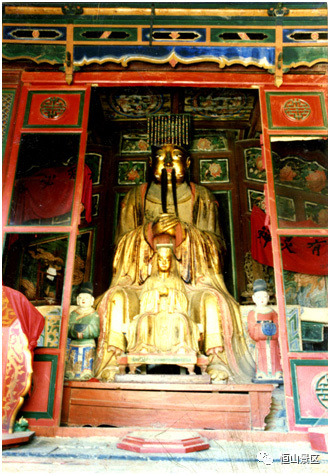
In his "New Discourse on Guangdong," Qu Dajun of the Qing Dynasty described the image of Zhenwu Emperor: "His image has unbound hair and no crown, wearing imperial robes and holding a Xuan flag, a golden sword stands before him, and a tortoise and a snake are coiled on either side." The main peak of Hengshan Mountain in Hunyuan County was formerly called Xuanwu Peak. The main hall on Xuanwu Peak houses a statue of the Xuanwu Emperor with a coiled tortoise and snake. In the Longquan Temple on the mountainside, there are two Xuanwu wells, one bitter and one sweet, less than a meter apart. At the foot of Hengshan Mountain lies the unique Hunyuan Xuanwu Ancient City, with its tortoise city, snake street, and 72 winding lanes. Every year, countless tourists come to worship the Xuanwu Emperor and visit the Xuanwu Ancient City. The Xuanwu water god culture of China has been deeply ingrained in the hearts of every Chinese person.
Another water god is the Lǜlǚ God. According to research, Hunyuan is the only place in China that worships the Lǜlǚ water god, which is truly puzzling. On Phoenix Mountain, 7 li north of Hunyuan County, there is a temple nestled beside the water called the Lǜlǚ God Shrine. It boasts stunning scenery and is a nationally protected cultural relic. Historically known as "Shenxi Night Moon," it was one of the eight ancient scenic spots of Hunyuan. From afar, one sees lush reeds and smoke rising from the village; up close, there is a gentle breeze and the shrine reflecting the moonlight, truly earning it the name of "Jiangnan beyond the Pass."
According to local legend, the "Lǜlǚ God Shrine" is connected to a local tale. On the evening of the first day of the sixth month in the first year of the Tang Dynasty's Dahe era, a Hunyuan resident named Zhang Gui spent the night at the shrine. After observing the murals, he lay down and quickly fell asleep. In his dream, he heard celestial music, the tinkling of ornaments, and a beautiful celestial being standing in the air who said: "Lǜlǚ, Lǜlǚ, Heaven decrees you, on the 25th of this month, there will be a heavy rain." With that, she soared into the air. The next day, Zhang Gui told his neighbors about his dream. While somewhat skeptical, they hurriedly harvested their wheat. On the 25th, as predicted, a heavy rain fell. As a result, people named this deity Lǜlǚ God, based on what Zhang Gui heard in his dream. Afterwards, they built a shrine on the lake's edge to worship him. Every year on the first day of the fifth lunar month, Shenxi Village holds a grand temple fair to commemorate the water god. Tens of thousands of devout men and women from surrounding areas of Hunyuan County gather at the Lǜlǚ God Shrine in Shenxi Village to offer sacrifices. Now, it is a national-level Shenxi Wetland Park, where ancient charm and modern scenery are intertwined, attracting a steady stream of tourists from all over who come to worship and sightsee.
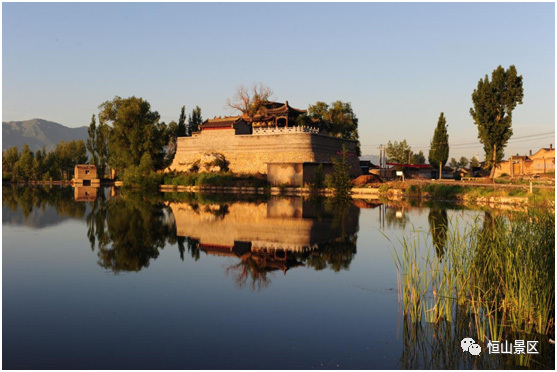
Hunyuan's name also originates from water; it is said to be named after eight streams converging on the south mountain. The water in Hunyuan is particularly magical: Hunyuan Tangtou Hot Spring is the number one spring in northern China, with remarkable health and wellness effects. A Northern Wei imperial palace once stood here, and emperors and their concubines came every year to bathe and escape the summer heat. The Hunyuan Shenxi Wetland is a national-level wetland park with blooming lotuses and swans, making for breathtaking scenery. Hengshan Mountain Lake in Hunyuan was designed and built by Qian Zhengying, China's first Minister of Water Resources, with its arch-shaped dam reservoir, suspension temple waterfalls, and flying bridges; it is a landscape of mountains and water, a sacred place. Hunyuan wine, brewed with the spring water of Hunyuan, is known for its refreshing aroma, purity, mellow sweetness, natural harmony, and lingering aftertaste. There is an old saying: "Inhale the water pipe smoke of Lanzhou and drink the liquor of Hunyuan Prefecture." It once won a gold medal at the Panama International Exposition. Local people say that the water in Hunyuan is so good because of the presence of two water gods. We just say it; you just listen; take it as entertainment.
Author: Yang Xinru
Keywords:
Hengshan
Related News


